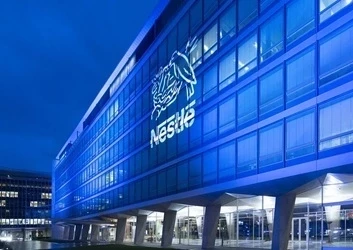Process automation and assumed knowledge
In the rush to implement automation, many organizations forget to adequately capture process foundations
Add bookmark
Anyone who has seen the remains of ancient Roman structures across Europe can attest to the impressive longevity of their constructions. In particular, Roman concrete has proven to be incredibly strong and hard-wearing, and in some cases, even self-repairing. You’d be right to wonder why we haven’t been using it for centuries, and the answer is simple: Poor documentation.
It turns out that while there is a record of many great Roman architectural feats, in most instances they stipulate the use of concrete but in every case, the records fail to capture exactly how it was made. It’s taken nearly 2,000 years for scientists to discover that the particular mix of volcanic ash and seawater is what gave the compound its remarkable properties.
I’m sure Roman architects and builders knew what was in it, but that’s the problem – they held assumed knowledge that drastically reduced the value of their records. Once they were gone, experts had to painstakingly recreate the basics of their work. It’s a problem we still face today.
Join the PEX Network community

Don't miss any news, updates or insider tips from PEX Network by getting them delivered to your inbox. Sign up to our newsletter and join our community of experts.
Learn MoreAssumed knowledge versus process knowledge
Process automation is an increasingly popular tool for accelerating process execution, reducing errors and increasing efficiency. It allows businesses to streamline activities and eliminate human error in data transmission and process continuity. However, in the rush to implement automation frameworks, many organizations forget to adequately capture the foundations for those structures – the processes themselves. Process automation is handed off to technical experts who are well-versed in the tools available but aren’t necessarily concerned with the underlying process knowledge. Their remit is effective automation, and while they may deliver that, the core content they build it from may not be seen as a vital part of the solution. In essence, they’re not writing down the formula for the concrete that holds everything together.
Processes are an essential asset for any business, as real as the bricks and mortar of their premises and as valuable as the IP they manage. Process knowledge has inherent worth because it both undergirds the workflows that facilitate operations and forms the basis for the as-is picture of the organization’s workings. While effective process automation benefits the day-to-day operations, it’s the process knowledge that supports strategic growth and the ongoing improvements that are required to achieve organizational goals.
Change happens. From evolving business conditions and economic shifts to emerging legislative requirements and technological updates, few operations can remain truly static. As those changes flow on through a business, its processes need to adjust to account for the new constraints, or opportunities. Previously effective workflows and automated processes will need to be revisited and revised to adapt to the new status quo. Think of it as new concrete that needs to be laid for the foundations of vital procedures. It’s essential that your teams know the recipe for how to make that. This is the strategic value of process information – the process assets.
The power of process documentation
Process documentation is a picture of the ‘now’ of your business activities. It’s the understanding of why things get done as much as what those steps are. Plenty of people will be familiar with the frustration of working with a legacy spreadsheet or system that requires certain seemingly-unrelated fields to be filled with arbitrary values in order to produce the required results. That’s undocumented automation at work. In order to effectively update the tool, it would need to be pulled apart at the seams and examined in order to find the truly meaningful parts, then those elements stitched back together in a new, more streamlined solution. That’s a lot of work that shouldn’t need to be done, because someone, somewhere, already did it once. They just didn’t record it.
Business process automation is a powerful tool, but organizations can’t afford to skip over the vital core that is the process knowledge within those workflows. Capturing that information clearly and effectively provides a foundation for further improvements. It creates a clear starting point for the next iteration of automation and allows future developers to make advances in the use of emerging tools without having to go back and reinvent the basics. It gives the builders the recipe for the concrete they need to make something solid and robust that will last.
As process management continues to evolve at a rapid pace, it pays not to forget the basics. Assumed knowledge may be common sense to everyone in your process initiative now, but there’s no guarantee they’ll be the ones revisiting the procedures and practices in years to come – or even in 12 months’ time. By recognizing the value of your process assets and properly capturing that content now, you’ll save yourself and your teams time and frustration, and lay a solid foundation for your future process excellence efforts.





















